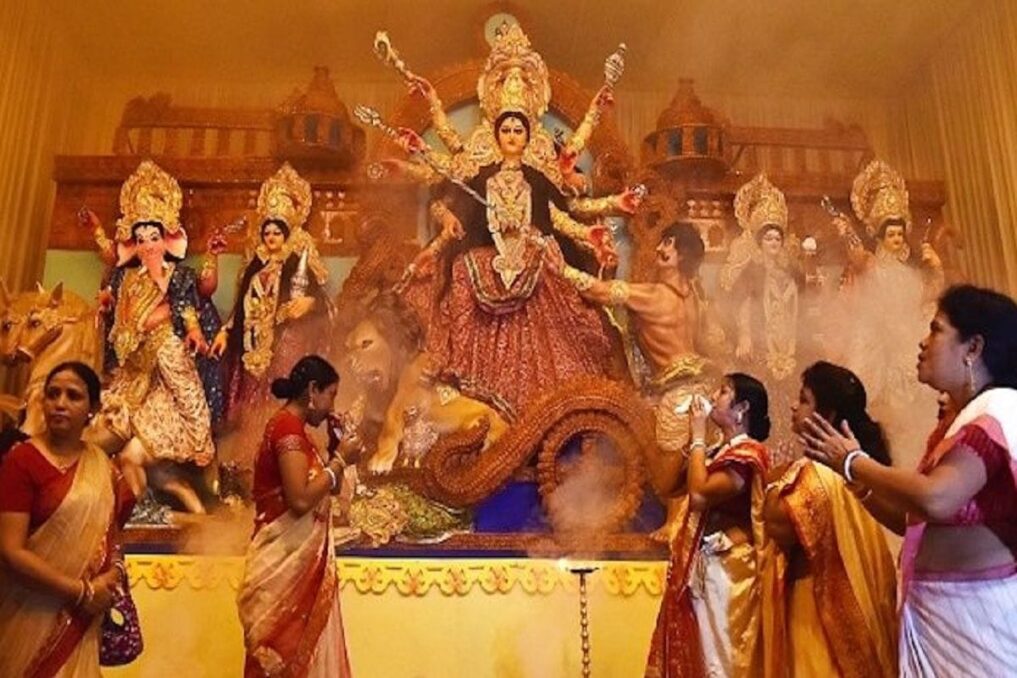It is a nine-day celebration dedicated to the goddess Durga, a powerful manifestation of the Divine Feminine.
Significance of Durga Puja
- Triumph of Good Over Evil: The festival commemorates Durga’s victory over the demon Mahishasura, symbolizing the triumph of good over evil.
- Feminine Empowerment: Durga Puja celebrates the power and strength of the feminine divine, empowering women and honoring their role in society.
- Spiritual Awakening: The festival is believed to be auspicious for spiritual practices, meditation, and seeking blessings from the Divine Mother.
How Durga Puja is Celebrated - Pandal Hopping: One of the most popular traditions during Durga Puja is “pandal hopping,” where people visit beautifully decorated pandals (temporary structures) housing the idols of Durga and her family.
- Puja and Offerings: Devotees offer prayers and perform puja to Durga, seeking her blessings and protection.
- Immersion: On the tenth day, known as Dashami, the idols of Durga are immersed in a nearby river or body of water, symbolizing her return to her heavenly abode.
- Cultural Events: Durga Puja is also a time for cultural celebrations, including music, dance, and traditional games.
- Feasting: The festival is incomplete without delicious food, with people enjoying a variety of traditional dishes.
Symbolism of Durga - Ten Arms: Durga is often depicted with ten arms, each holding a different weapon, symbolizing her immense power and ability to destroy evil.
- Lion Mount: She rides a lion, a symbol of courage, strength, and royalty.
- Demon Slayer: Durga is known as the slayer of demons, representing her role in protecting humanity from evil forces.
Durga Puja is a vibrant and colorful festival that celebrates the divine feminine and the triumph of good over evil. It is a time for spiritual reflection, cultural celebrations, and community bonding. The festival’s significance lies in its ability to inspire and empower people, reminding them of the power of faith and the importance of honoring the feminine divine.




